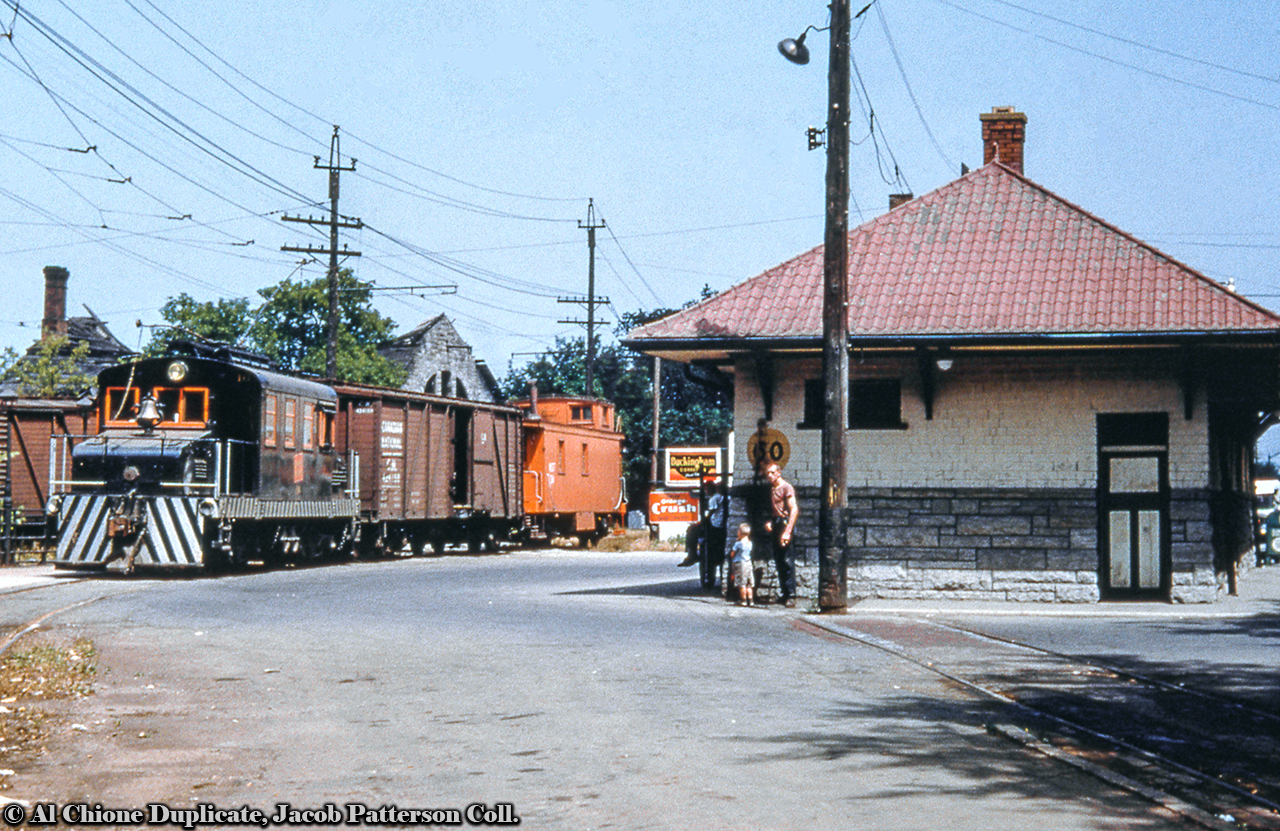|
Caption: NS&T motor 16 is seen passing the Thorold station with a short train. The pocket track at right was used by interurban cars starting or ending their run keeping clear of the main for other movements to pass. Note the burnt out structure behind the train, the remains of the James Davy Pulp Mill. Built as a flour mill, it was purchased by Davy and his associates in 1886 and converted to a pulp and paper mill, receiving rail service from the NS&T, note the boxcar spotted off to the left. A fire in the mid '50s destroyed much of the structure.
Motor 16 was built by National Steel Car in 1918 for the Hydro Electric Power Commission. It came to the NS&T in 1922 and was rebuilt in 1930. In September 1960 it was transferred to the Oshawa Railway (also under CN Electric Railways) as their 16. In November 1964 it was sold to Noranda Mines as their 20. Further disposition unknown.
Original Photographer Unknown, Al Chione Duplicate, Jacob Patterson Collection slide.
|



Many thanks for posting this historical and memorable picture Jacob. Note the orange painted caboose lettered for NS&T. This short freight train could well be on its way to Port Colborne to switch the the Robin Hood Flour Mill in Humberstone, and then 16 with its NS&T caboose would be “out posted” in Port Colborne. I have two b&w pictures of motor 21 parked at Port Colborne in a short pocket track on the north side of Welland Sub, one block west of Port Colborne station, taken in spring 1957 and again on Sat March 28, 1959 (last day of the regular Service to Thorold). In both pictures, the attached caboose is a lettered CNR “Serves all Canada” orange wooden van, not one lettered for NS&T. Somewhere after 1955 the NS&T van was replaced with a CN one. There doesn’t appear to be many pictures of NS&T lettered caboose. The “larger” electric motors such as 16, and 21 were usually the Port Colborne out posted motors as there was “hefty” switching at the flour mill in Humberstone and with CN in Port Colborne.
Interestingly, although the interurban cars and express motors were repainted into CN passenger green, the freight motors remained in their black with orange trim & doors and white striped end “pilots” until the end of freight operation. Similarity, the two line cars and sweepers kept their CN orange paint until the wires came down. Also, note the gentleman with the cane and youngster watching 16 trundle by, perhaps they are awaiting the arrival of the Port Colborne car which will pull into the track ending right where they are standing. A great picture with very interesting detail and an informative caption – did not know about the mill building behind the train, much appreciated. John